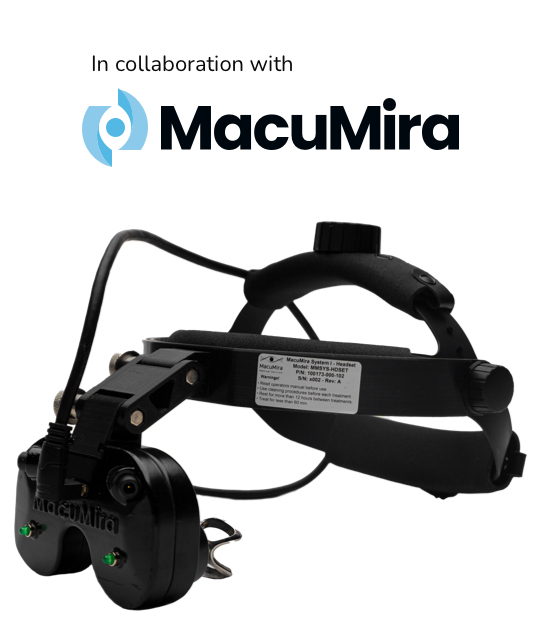It’s pretty clear that, in today’s digital world, you have to have a website. But throwing an image of your practice and your address up somewhere online isn’t enough. If your business were a person, your website would be its dating profile. Nobody wants to go on a blind date anymore; they want to scope out potential partners first to see if they’re worth their time.
The vast majority of new patients will go through your site before calling, requesting an appointment, or walking through your door.
You should consider your website to be your director of first impressions, your number one salesperson, and the face of your practice. Just like any employee, you need to give your site the time, energy, and information to do its job properly. You probably go over your optical employees’ sales figures from time to time to see who’s performing well and who could benefit from coaching. Again, you need to apply that same principle to your website if you really want it to work for you.
It sounds overwhelming, but building an effective website isn’t catching lightning in a bottle. The whole process can really be broken down into three basic parts.
What Counts as a High-Performing Website?
Before we go into the 3 keys to a high-performing website, we need to talk about what that means. What is a high-performing website and how do we measure the height at which it performs? It comes down to what we call a conversion rate.
In marketing, a conversion translates to a consumer doing whatever it is you want them to do. So if you want website visitors to request an appointment, every time someone fills out your “request appointment” form, that’s a conversion.
A conversion rate just describes how many views or visits turn into conversions. So if 100 people visit your website and 50 of them request an appointment, your website is converting at 50% (which is pretty high).
Key 1: Great Design

First impressions are everything, especially in the digital world. The average web user will only give you 3-8 seconds to capture their attention before deciding to look somewhere else. With such a short time frame, it’s not your hours or your location that’s going to keep the user interested; it’s your design.
There’s a whole lot of websites out there in the vast expanse of the internet, and yours needs to stand out. Investing in a well-designed website that goes with your brand gives your practice instant credibility; if your site looks professional and well-built, users are more likely to trust what you have to say.
Your website also needs to be responsive, which means it adapts to the user’s viewing method to give them the best possible experience. The biggest element of website responsiveness is mobile compatibility. As of 2018’s third quarter, 52.4% percent of global internet traffic comes from a mobile device. If your website isn’t optimized for mobile users (allowing them to see your site without an unreasonable amount of panning or scrolling), you’re missing out on a huge chunk of potential business.
Key 2: Content & Structure

Now that we’ve caught the web user’s attention, we need to keep it with relevant and genuinely helpful content.
A lot of businesses make the fatal mistake of absolutely stuffing their content with keywords in hopes of making their website more search-engine friendly. The result ends up being something like this:
“Jill’s Optometry offers comprehensive family kids eye exams in south-east Calgary for patients of all ages. Our south-east Calgary pediatric eye doctors are here to fulfil your family optometry needs.”
This was an effective way to boost your Google ranking a few years ago, but today, search engines are more focused on finding websites that actually address user intent.
So how do you address user intent on your site? First of all, make sure the most important information comes at the top of the page. Web users don’t like to scroll much, so if you’re putting a page together about myopia control, make sure the first paragraph on the page clearly says that your practice offers myopia control. After that, you should talk about what myopia control is and why it’s important. Finally, you can briefly cover the methods of myopia control available at your practice.
Remember who you’re talking to. The average web user isn’t looking for a textbook on eye care; they’re looking for general information on eye care services. You don’t need to get granular with your content, and you definitely want to avoid loads of medical jargon. And of course, always keep user intent in mind. Ask yourself what is the user looking for and have I answered the question that brought them here?
Writing copy can be tedious, so it’s tempting to copy/paste content from another source. Even if you were to cite the content properly to avoid plagiarism issues, using pre-existing content is a huge no-no from a search engine optimization standpoint. Search engines look for unique content, which means your web copy needs to be custom-written.
Digital copywriting is completely different from the type of writing most of us are used to because web users don’t interact with web copy the way they interact with print. If you really want to keep your copy relevant and effective, you’ll hire a professional copywriter. They’ll know all of the written and unwritten rules for putting together good content that promotes your business while still addressing user intent.
Key 3: Performance

Remember when I said that you only have 3-8 seconds to grab your user’s attention? If your website takes 9 seconds to load, it doesn’t matter how beautiful your site is or how engaging your content is. You’ve lost the user before you even had the chance to state your case.
Website load speed is absolutely crucial when considering website performance. Digital users are used to information at their fingertips. If you want to compete with the other guys, you need to make sure you get the best information into the user’s hands faster than anyone else. It’s really as simple as that.
Implementing Conversion Rate Optimization
That headline threw a lot of very jargon-y words at you, but it’s really a fancy way of saying “making your website better.”
Conversion rate optimization is just a process of scientific experimentation; testing elements of your website to sort out what combination of text, images, colours, layouts, and buttons lead to the highest possible conversion rate.
We’ve already covered the three big elements of a high-performing website, but there are plenty of smaller factors that can have a significant impact as well. Here are some things you may want to focus on and play around with when it comes to conversion rate optimization:
- Modern graphic design that enhances your brand and provides a strong first impression
- Professionally written copy; ideally written by someone trained in digital content a well as eye care
- Custom photography of your business and your staff; people connect with people
- A well-written About Us page; in our experience, the About Us page sees some of the most traffic
- Mobile responsiveness; ensure that your site is easy to use and navigate via mobile device
- Make your phone number easy to find and clickable on mobile devices
Website speed; this tool can measure your site speed, and generate a free report on how you can improve it
































